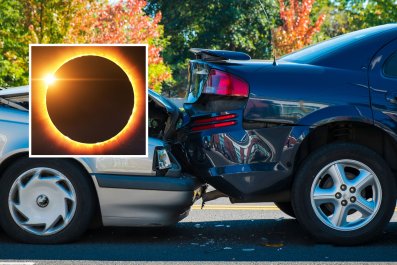The complete shrouding of our sun by the moon has mesmerized humanity for millennia — a moment in time when skies darken and stillness creeps in.
It’s spellbinding not only for the lucky ones in the path of total darkness, but also those on the fringes of the moon’s shadow getting a partial glimpse.
The cosmic curtain is about to rise again on the greatest show on Earth: a total solar eclipse that will dazzle tens of millions as it races across North America.
Day will turn into night as the moon perfectly positions itself between Earth and the sun on April 8, temporarily blocking the sunlight. The eclipse will begin in the Pacific, cross into Mexico and then cut through Texas on a northeasterly path through 15 states before heading out over Canada and the North Atlantic.
Totality will last up to 4 minutes, 28 seconds — enough time for the wonder of it all to soak in, weather permitting.

The progression of a total solar eclipse is seen in a multiple exposure photograph taken in 5-minute intervals from Siem Reap, Cambodia, on Oct. 24, 1995. (AP Photo/Richard Vogel, File)
“The sight of a total solar eclipse is stunning because the most beautiful celestial object — the sun’s corona — is hidden from us all our lives except for the precious moments of totality,” eclipse mapmaker Michael Zeiler said in an email.
Even scientists like NASA’s Kelly Korreck find themselves in awe.
“There might have been tears of joy the first time,” she said. “To actually experience it was just really a powerful, moving experience.”
While full solar eclipses happen every year or two or three, they’re often in remote locations like the Arctic or Antarctica, the southern tip of South America or the Pacific.
The last time totality crisscrossed the U.S. was in 2017, with totality lasting 2 1/2 minutes. After April, it won’t happen again until 2045, but get set for six full minutes of totality.
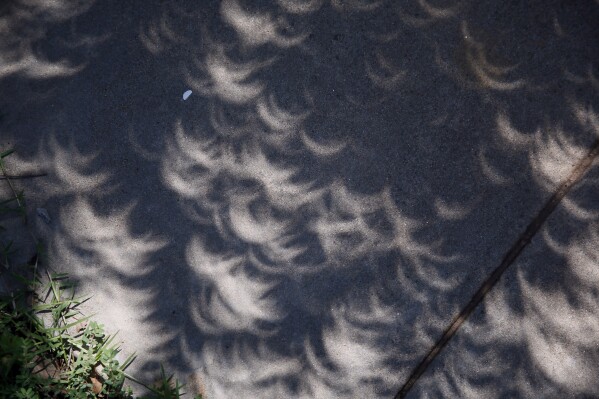
Images of the crescent-shaped sun are projected on a sidewalk as light passes through the leaves of a tree during a partial solar eclipse in Oklahoma City on Aug. 21, 2017. (AP Photo/Sue Ogrocki, File)
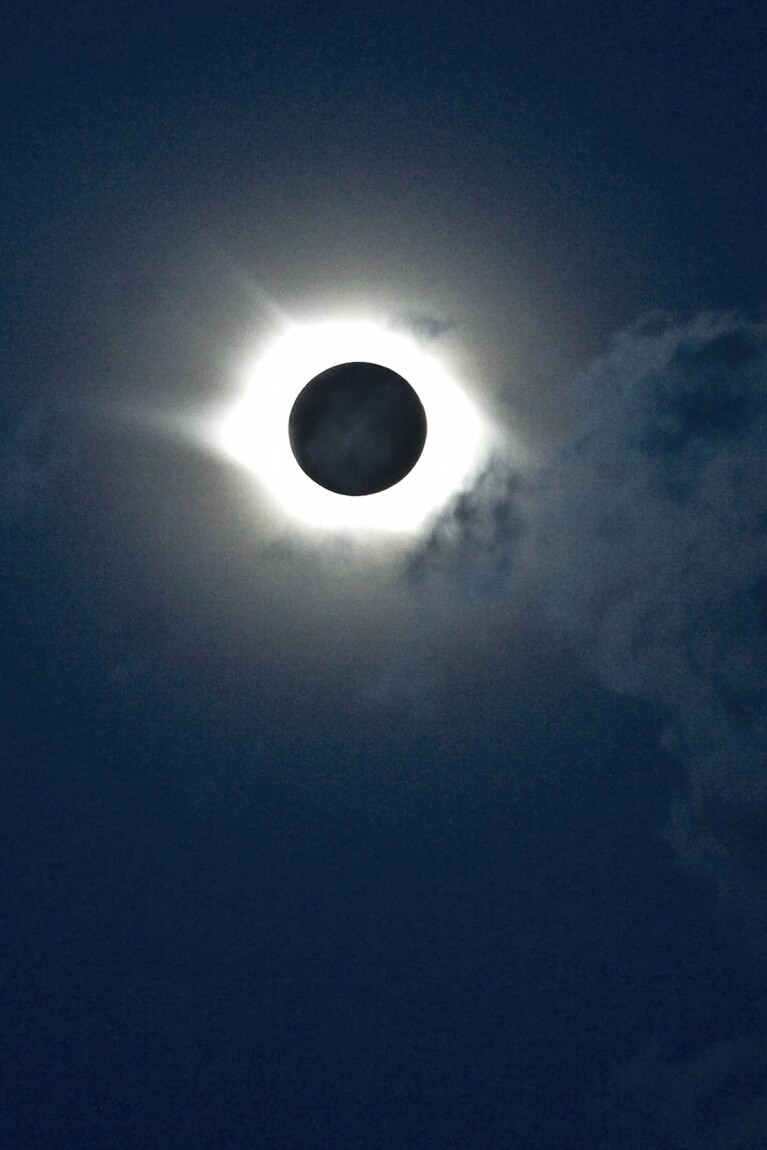
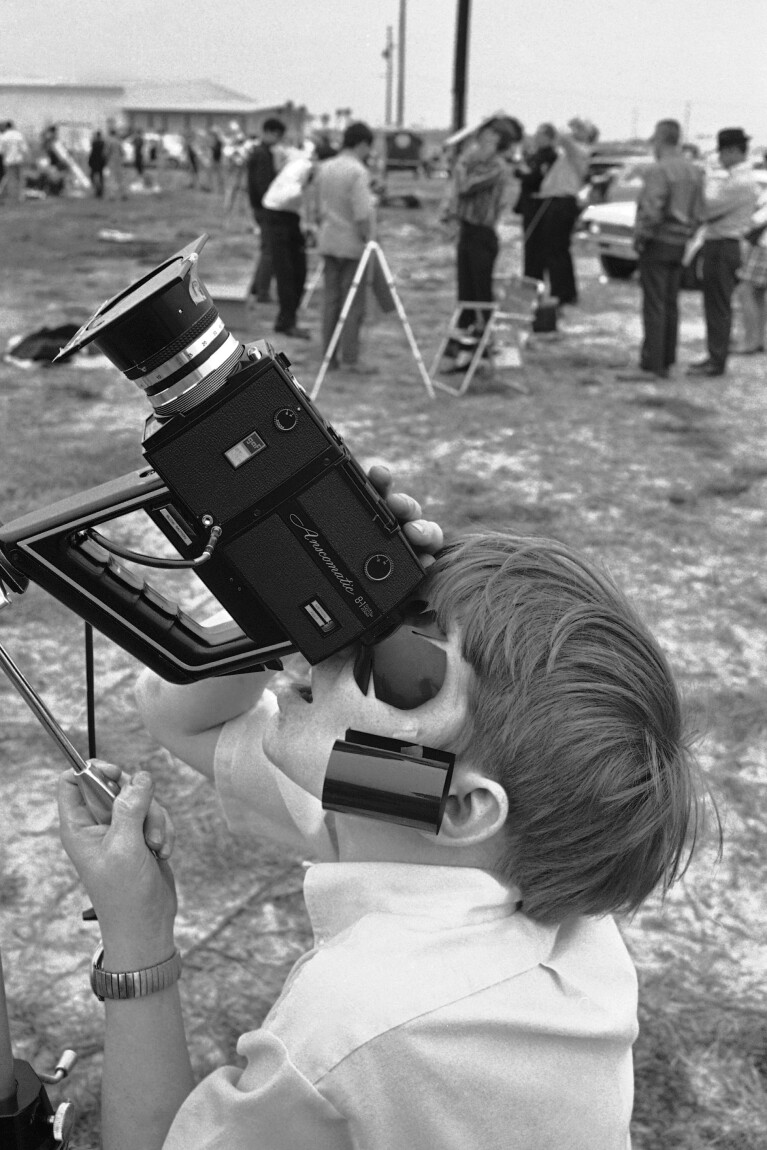
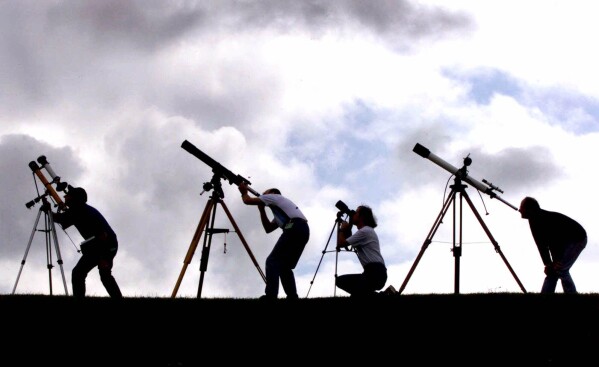
Members of the British Astronomers Association set up their telescopes at a campsite near Truro, England, on Aug. 10, 1999, preparing for a total solar eclipse the next day. (AP Photo/Dave Caulkin, File)
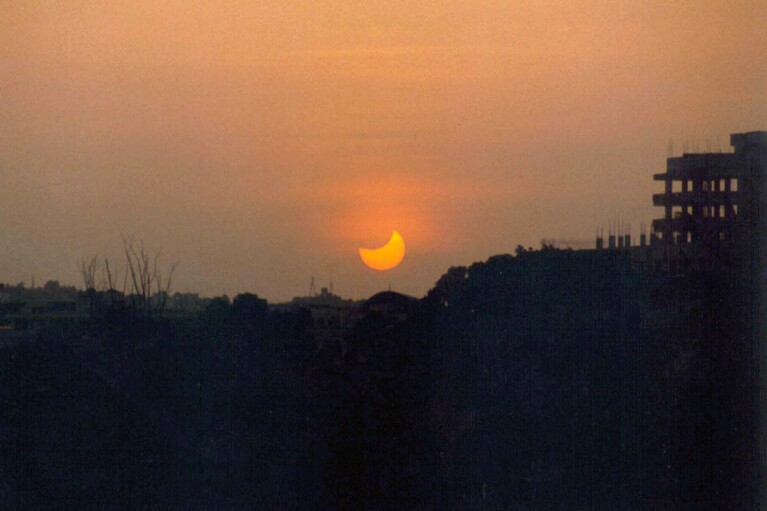

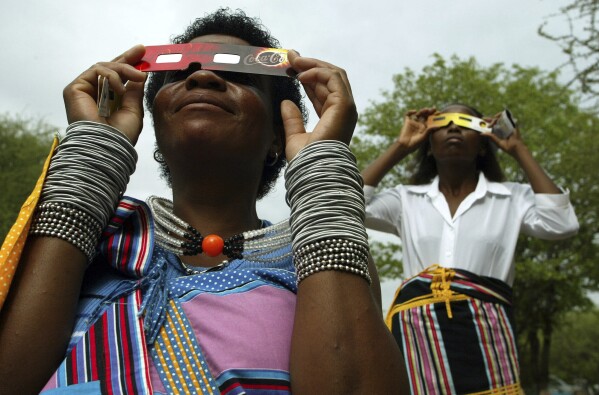
Lucy Maphiri, left, and Margaret Makuya watch the total solar eclipse over Shingwedzi camp in South Africa’s Kruger National Park on Dec. 4, 2002. (AP Photo/Jon Hrusa, File)
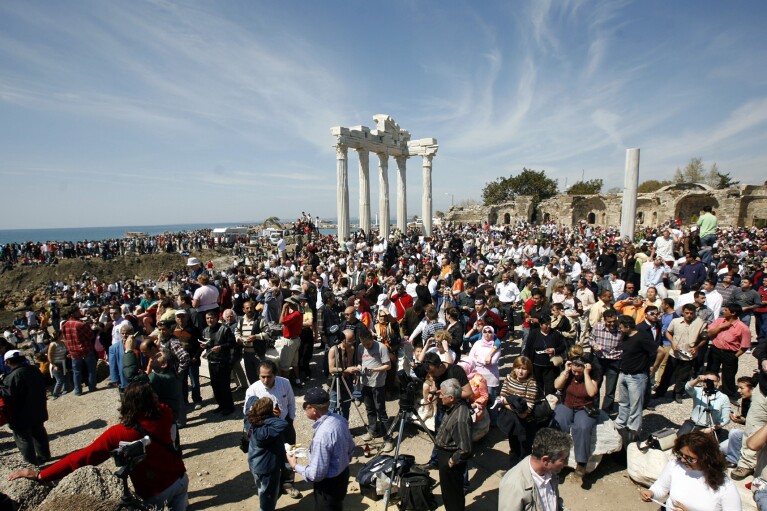
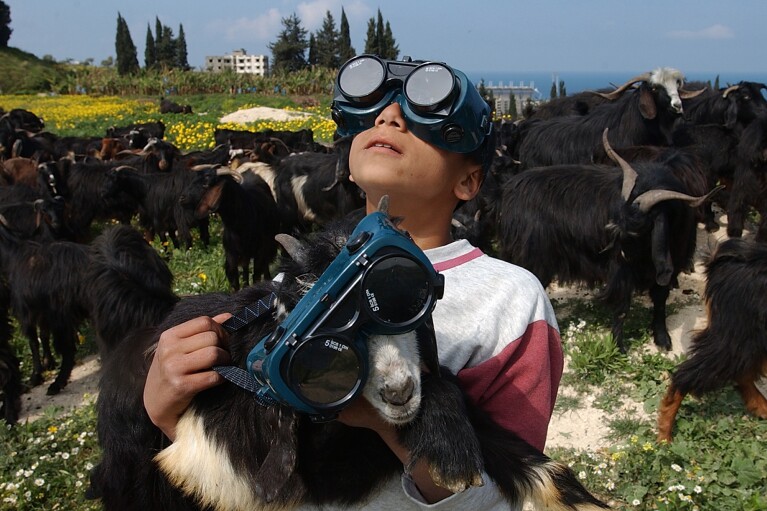
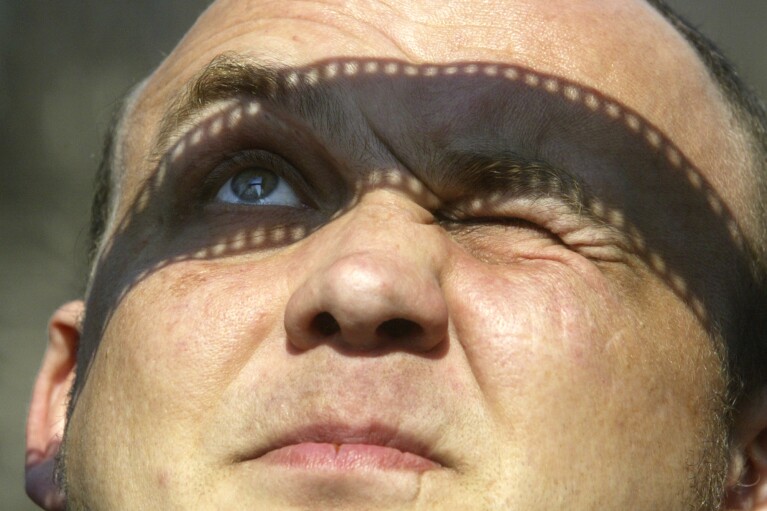
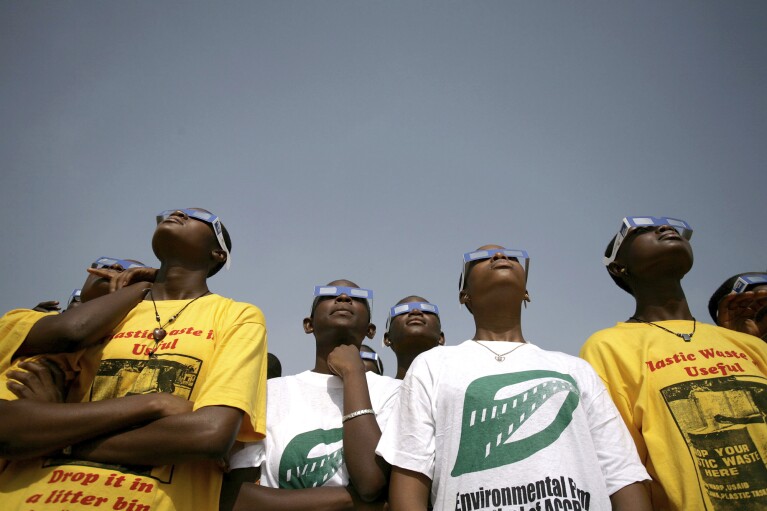
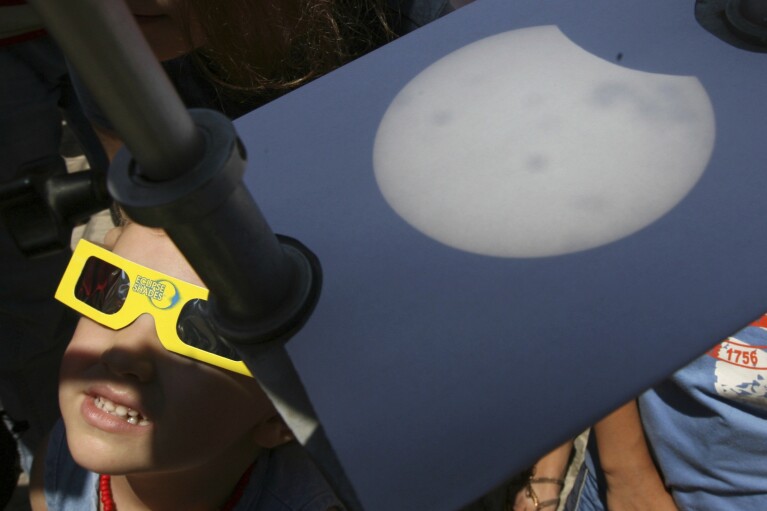
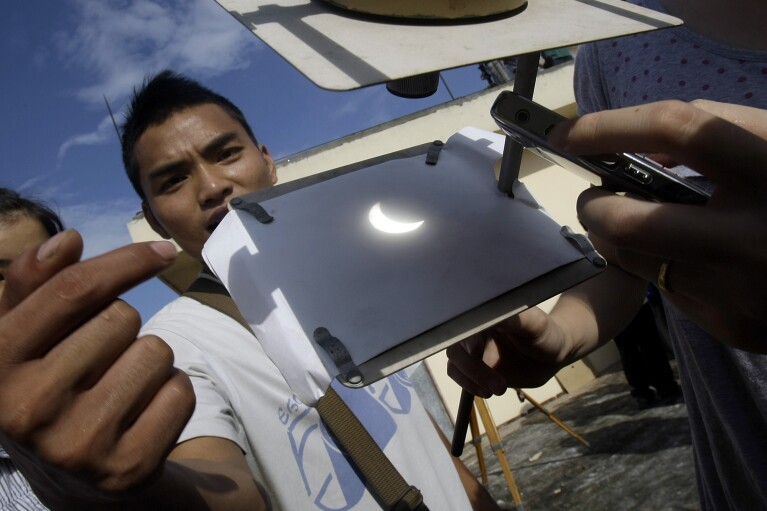

A total solar eclipse appears above giant Moai statues on Easter Island on July 11, 2010. (AP Photo/Patricio Munoz, File)
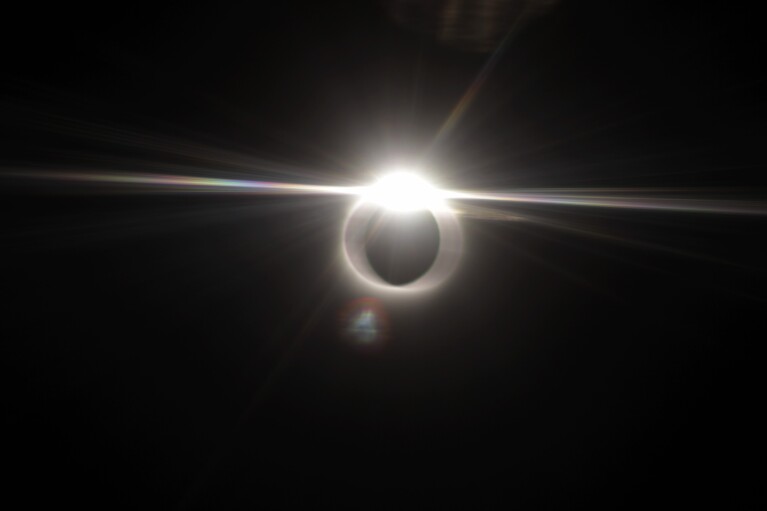
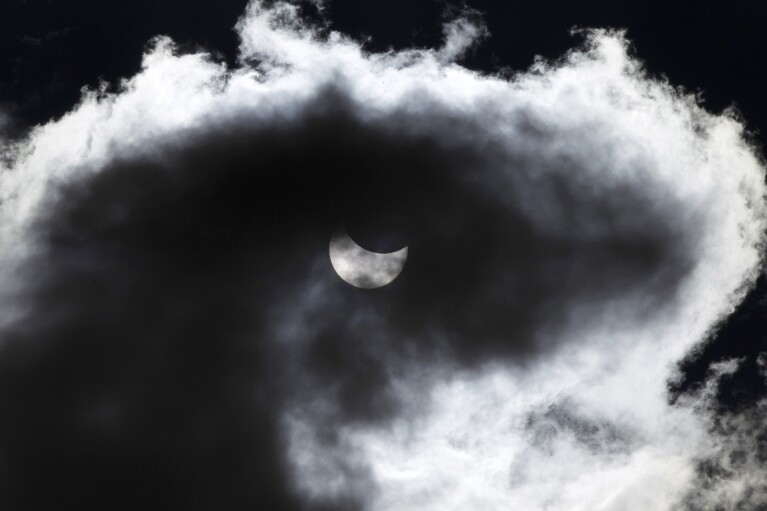
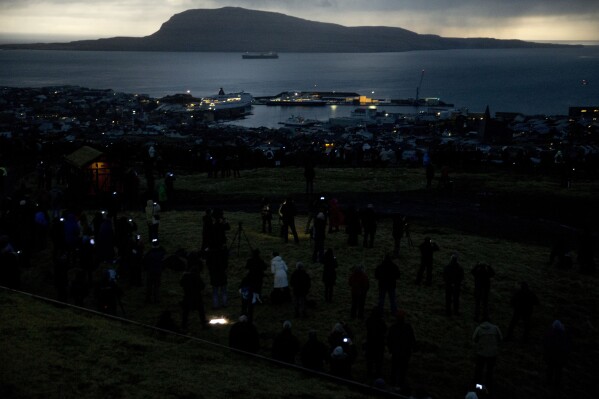
People watch in darkness during the totality phase of a total solar eclipse on the Faeroe Islands on March 20, 2015. (AP Photo/Matt Dunham, File)
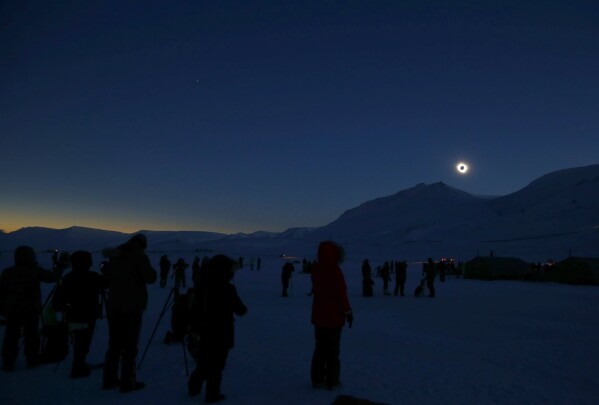
People gaze at the total solar eclipse from Svalbard, Norway on March 20, 2015. (Haakon Mosvold Larsen/NTB Scanpix via AP, File)
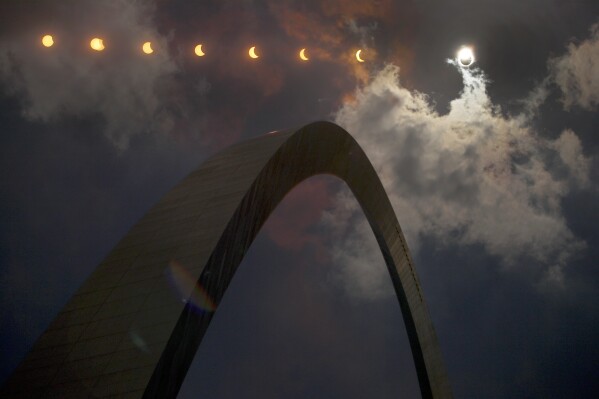
This multiple exposure photograph shows the progression of a partial solar eclipse over the Gateway Arch in St. Louis on Aug. 21, 2017. (AP Photo/Jeff Roberson, File)


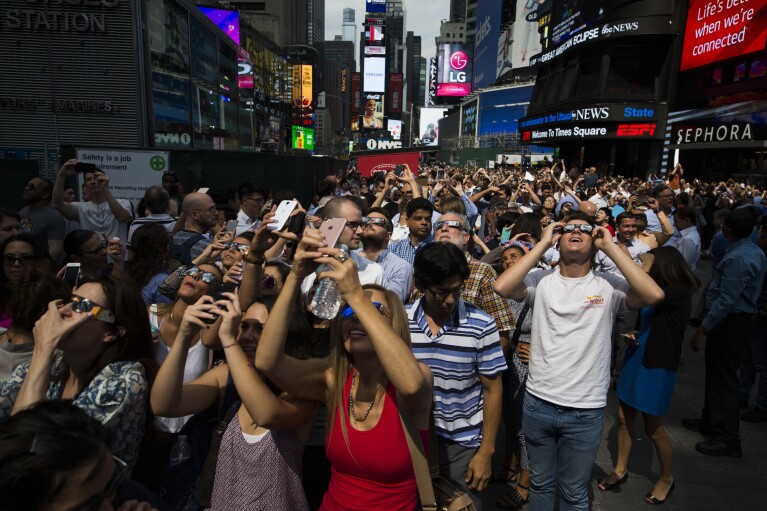
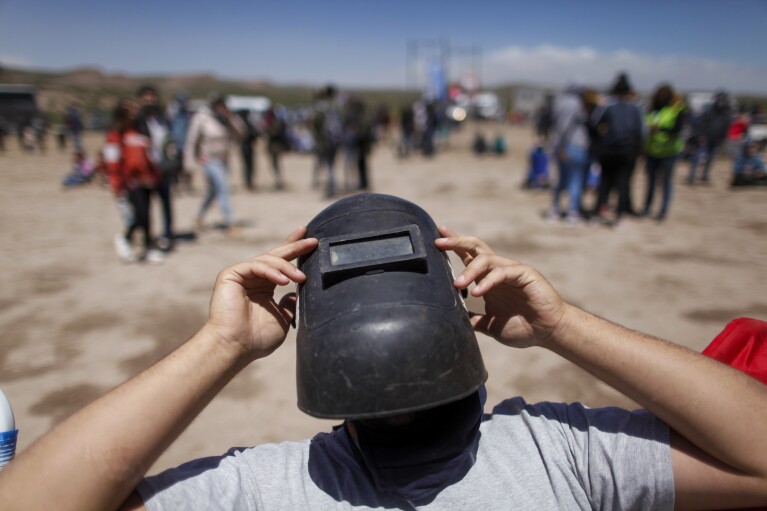
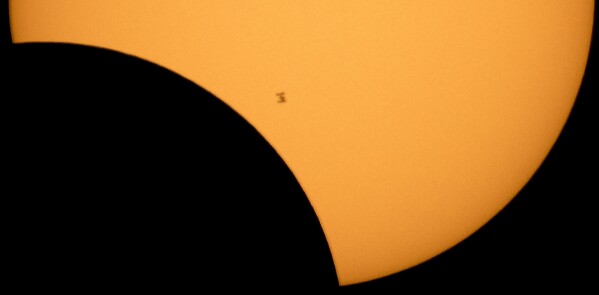
The International Space Station is silhouetted against the sun during a total solar eclipse on Aug. 21, 2017, as seen from Northern Cascades National Park in Washington state. (Bill Ingalls/NASA via AP, File)
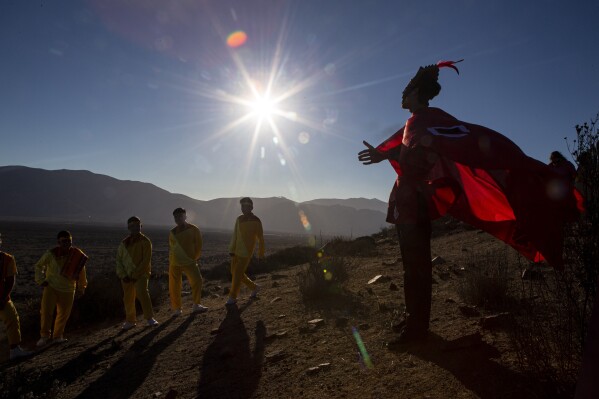
A youth dressed as a shaman arrives to take part in a photo session before the total solar eclipse in La Higuera, Chile, on July 1, 2019. (AP Photo/Esteban Felix, File)
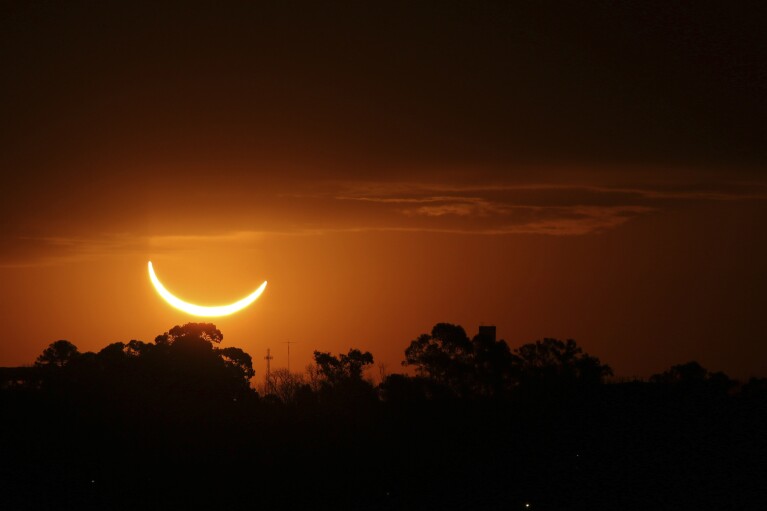
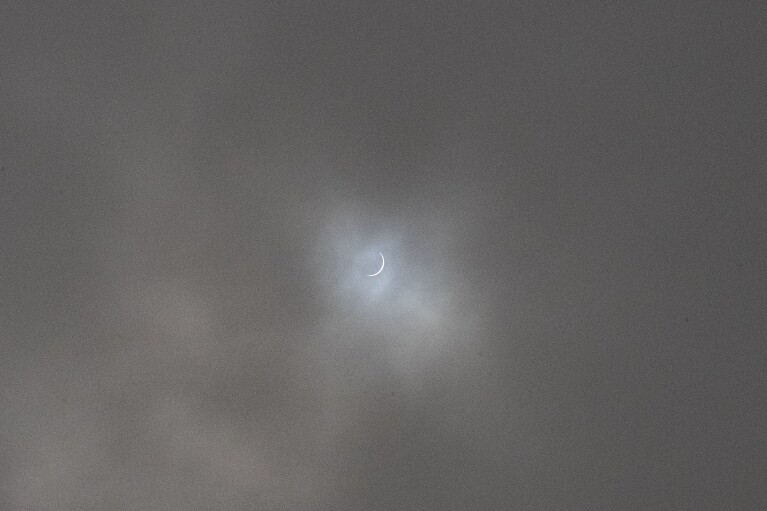
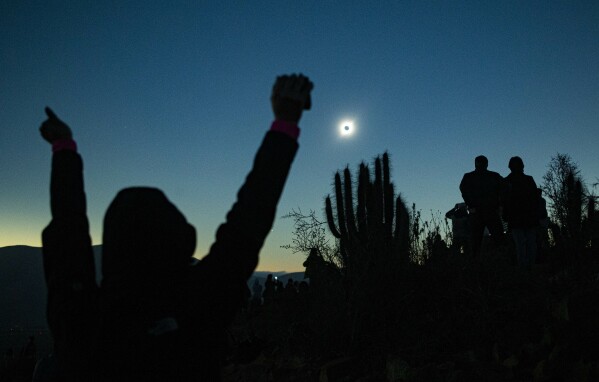
Spectators enjoy a view of a total solar eclipse from La Higuera, Chile, on July 2, 2019. (AP Photo/Esteban Felix, File)
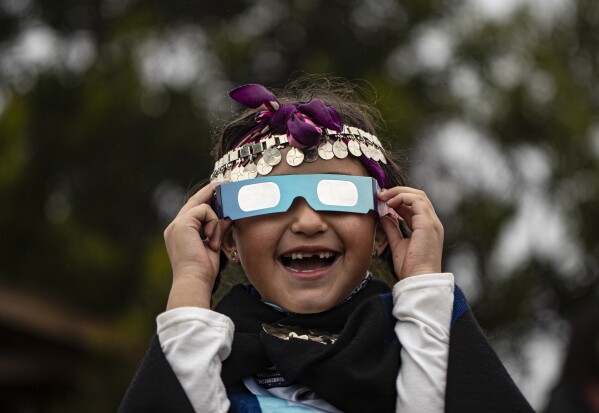
Magdalena Nahuelpan, of the Mapuche group, looks at a total solar eclipse through special glasses in Carahue, Chile, on Dec. 14, 2020. (AP Photo/Esteban Felix, File)
___
The selection was curated by AP photo editor Patrick Sison in New York. To see more of AP’s vast photo archive from around the world, visit AP Newsroom.
The Associated Press Health and Science Department receives support from the Howard Hughes Medical Institute’s Science and Educational Media Group. The AP is solely responsible for all content.
___
Follow AP visual journalism:
Instagram: https://www.instagram.com/apnews
AP Images on Twitter: http://twitter.com/AP_Images
AP Images blog: http://apimagesblog.com
Disclaimer: The copyright of this article belongs to the original author. Reposting this article is solely for the purpose of information dissemination and does not constitute any investment advice. If there is any infringement, please contact us immediately. We will make corrections or deletions as necessary. Thank you.

